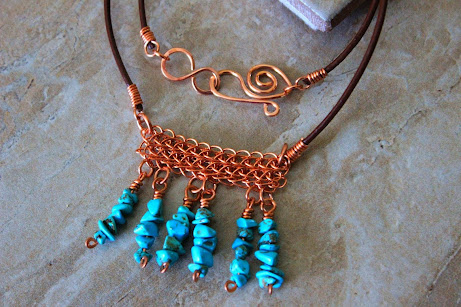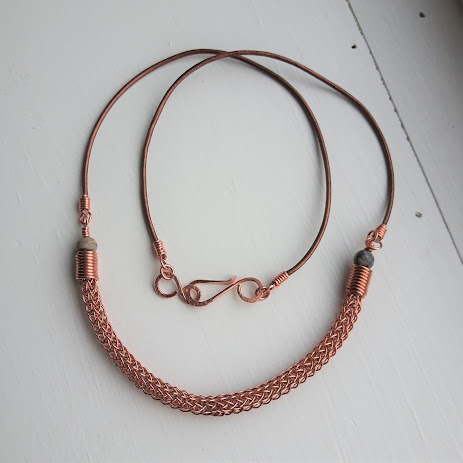The roots of my wire knitting obsession (originally published 20 August 2018)
I often get asked how I got started with wire knitting.
To answer that question I have to go back to the late 1990s, when the internet was still young and I was part of a craft book of the month club. The monthly flyer had arrived as usual and my attention was immediately drawn to a photograph featuring what looked like wire knitted jewelry. I bought Great Wire Jewelry: Projects ands Techniques by Irene From Petersen and then promptly moved to a place where I couldn’t get the supplies I needed and the internet wasn’t then what it is now, so I put the book away and figured one day, someday.
Fast forward to 2012. Circumstances had prompted me to start looking at my personal bucket list and making jewelry was near the top. So I bought some materials and started doing Viking style wire knitting. I was hooked! In 2015, I learned about the work of wire artist/sculptor Ruth Asawa and recognized that I could scale down her technique and use it to create knitted wire jewelry using heavier gauge wire.
These days, I’m turning my attention to larger scale knitted projects. I am also working on my first small collection of pieces that will be part of my first solo exhibit at the Craft Council Gallery in early 2019. This work is funded in part by art grants from ArtsNL and the City of St. John’s.
The picture (left) is of a wire sculpture I made using Ms. Asawa's knitting technique entitled: What Do You See?
I still knit with yarn, though these days I prefer finer gauge yarn than I did in my 20s and 30s. My favorite thing to knit still is a wool sock. But more often than not, when I knit it is with wire and not just because that’s how I make jewelry. Wire knitting has become a way for me to bring knitting to a different audience.
Art knitter, Adrienne Sloane once described knitting as solving a series of engineering problems* and I couldn’t agree more. I think of all those people across the centuries turning balls of fibrous “string” into functional garments and useful home items, often creating their own patterns or adjusting patterns to suit the wearer or purpose. Yet most people don’t consider knitting as an engineering activity even though they likely know someone who knits or may even knit themselves.
But once you knit with a non-traditional material, things change. The large scale wire knitted installations created by Ruth Asawa, and others, are regarded very differently than the indie sweater patterns found on sites like Ravelry.com, yet they have more in common than some might think.
When I explain that my wire knitted jewelry or sculpture uses the same basic unit (i.e. a stitch) as their grandmother used to knit their favorite cap or sock, they are amazed. My goal is that through my work, I can help foster a renewed appreciation for knitting and provoke people to view it with increased respect.
* Statement made during her workshop at the CCNL Fibre Arts Conference, Gros Morne, NL, October 2015, which I attended.





Comments
Post a Comment